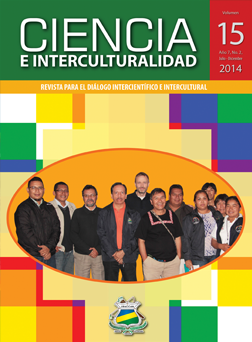Estado poblacional del Almendro como indicador de la disponibilidad de hábitat de Lapa Verde en el Sureste de Nicaragua
Palabras clave:
Dipteryx panamensis, Ara ambiguus, hábitat, distribución espacial, uso tradicional, sureste de Nicaragua.Resumen
La investigación se realizó en siete comunidades del Sureste de Nicaragua, con el objetivo de determinar el estado actual de la población de almendro (Dipteryx panamensis), como indicador del hábitat potencial para la lapa verde (Ara ambiguus). Se muestrearon 21 parcelas de 1ha cada una, estableciendo tres parcelas por comunidad, también se entrevistaron a pobladores para determinar la relación de éstos con las especies en estudio. En las parcelas muestreadas, se contabilizaron un total de 93 árboles de almendro con Diámetro a la Altura del Pecho (DAP’s) ≥70cm, lo que representa una densidad promedio de 4.4 almendros/ha. También, se identificaron posibles amenazas para las especies en estudio y su particularidad con las comunidades y grupos étnicos. Resultados de Modelos Lineales Generalizados (GLM) y análisis de correlación, indican que en la zona de estudio, no es el tamaño o diámetro de los almendros lo que mantiene poblaciones de lapas, sino que influyen mucho la densidad de individuos con DAP≥70cm, el nivel de aislamiento de la comunidad y la cantidad y tipo de usos que le dan los pobladores al árbol. Desde los modelos de Maxent, en los alrededores de 5 comunidades (La Bijagua, Bartola, Indian River, Corn River y Point of Rock) presentan condiciones viables para la distribución del hábitat potencial del almendro y por ende de lapas verdes.
Summary
The research was done in seven communities in the southeast of Nicaragua, in order to determine the current condition of almond-tree population (Dipteryx panamensis), as an indicator of potential habitat for the Green Macaw (Ara ambiguus). 21 plots of 1ha each were sampled, by establishing three plots per community. Community people were also interviewed to determine their relationship with the species object of study. In the sampled plots, a total of 93 almond-trees were counted with Diameter at Breast Height (DBH's) ≥70cm, representing an average density of 4.4 almond-trees/ha. Potential threats were also identified to the species subject of study and its particularity with the communities and ethnic groups.
The results of Generalized Linear Models (GLM) and the analysis of correlation, indicate that in the study area, it is not the size or diameter of the almond trees that maintains the green macaws populations, but what influences much is the density of individuals with DAP≥70cm, the level of isolation of the community and the amount and type of uses that the community people gives to the tree. According to Maxent models, on the surroundings of 5 communities (La Bijagua, Bartolo, Indian River, Corn River and Point of Rock) it offers viable conditions for the distribution of potential habitat for almond-tree and thus, for green macaws.

